
A major fire at the popular crag Oliana in Peramola, Catalonia has destroyed the forests above and below the face and caused significant damage to the outer layer of rock and in-situ climbing equipment. The fate of its world-class sport routes is unknown until further examination.
The fire was ignited on 19 June by working agricultural machinery in a field close to the crag amid a heatwave that has scorched countries across Europe and resulted in severe drought.
In the days leading up to the fire, temperatures in Peramola had reached up to 41°C during Spain's earliest heatwave in four decades.
Local climber Dan Forgeng witnessed the fire spread and explored the charred grounds in the immediate aftermath. He told UKC:
"With heavy winds and super dry conditions, the fire spread quite fast. The fire quickly spread to the forest below the main crag and climbed up and spread up above the multipitch wall. The firefighters worked to contain the fire well into the next day and were able to contain it to just 123 hectares."
The impact of the fire is unknown as yet, but Dan's initial assessment is that all routes from Mishi to the far left side of the crag are significantly damaged. The heat has weakened the rock and its outer crust has separated.
At the bottom of the crag, piles of debris have formed from the crumbling rockface, including many key holds with chalked features. Dan believes that some of the cliff's classic hard routes may be able to be saved. He told UKC:
"Mishi 8a, China Crisis 8b+, T1-full Equip 8b+, Crimptonite 8b+, noname 7a, name? 7b are maybe salvageable, but will most definitely need to be re-bolted, re-cleaned and for sure will be permanently altered. The easier routes down and further left might not even be worth restoring."
While the rest of the wall appears unscathed, a large chunk of Pachamama 9a+ has fallen and the structural integrity of the crag is impossible to know for certain until the area is thoroughly surveyed. The crag is closed until further notice.
Dan explained that a group of local climbers and bolters will work together to assess the routes and replace the fixed gear that has been damaged. He said:
"We have been in touch with some gear companies that have offered to test the fixed gear. But we will err on the side of caution and remove/replace all of the fixed quickdraws. It will be a massive and expensive undertaking. We have started a crowdfunding page to help with the restoration."
Locals are currently prioritising restoring access to the road, paths and reforestation work. Closer analysis of the rockface will take place in September and October and the team is looking for volunteers to assist in their efforts.
The crag - known locally as the Contrafort de Rumbau - is home to a high concentration of the world's hardest routes, including Adam Ondra's La Dura Dura 9b+.

A climate scientist at the University of Lleida in Catalonia told AP News that climate change is prolonging wildfire seasons across Europe. In addition, fire seasons are beginning earlier in the year and blazes are also occurring in northern Europe as temperatures rise.
French climber Svana Bjarnason, who is currently living in the area, appealed to climbers to recognise this incident as a symptom of the wider global impact of climate change. She wrote on Instagram:
"I think it's important to remind people that what happened in Oliana comes from a much bigger issue than having our playground ruined. Global warming is destroying our planet and, if our governments don't act, we can. There are many small things we can do, in our lifestyle and the way we practice our activities. Starting by not making leaving trash at the crag, not making a fire when it's super warm … To not respect and care about the environment isn't an option anymore."



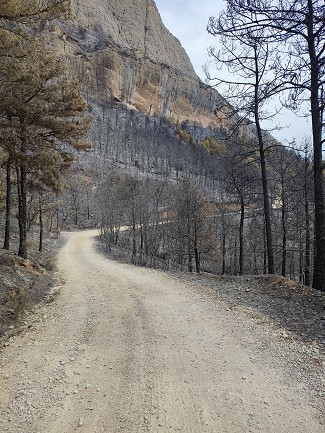
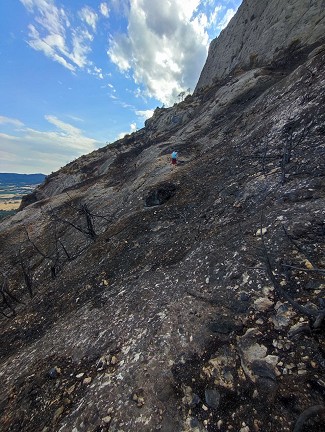
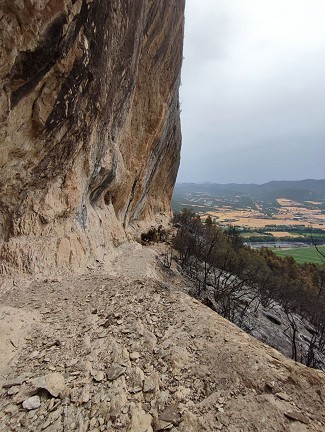
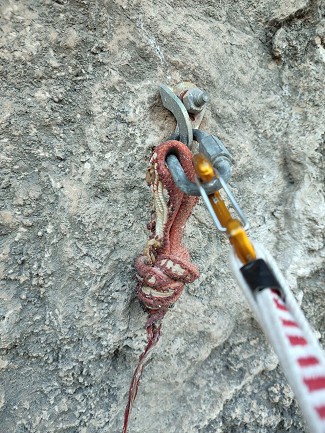



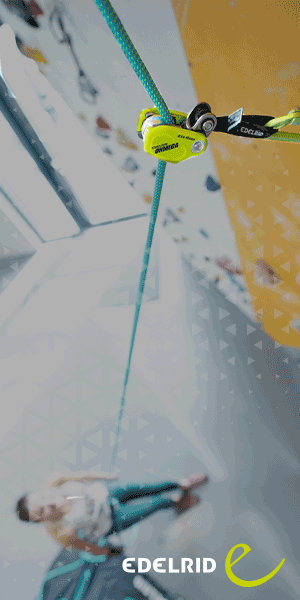











Comments
It’s so sad to read about this, but unfortunately we are bound to see more of this cases as climate change progresses. But I would imagine other crags have had fires before and I wonder how come the rock hasn’t been destroyed the way it has in Oliana.
Yes terrible news.
https://www.ukclimbing.com/forums/rock_talk/fire_destroys_routes_in_oliana-748994
I can't quite believe the suggestion to climbers to reduce their impact is "don't have fires at the crag", rather than "don't go on an aeroplane/drive your van thousands of miles to a different country to go climbing".
To be fair the suggestion does begin "To start with....." which seems pretty sensible to me
Well there was roadrunner cave in Wales and Turkey rocks in colorado, not much comfort, but not unprecedented